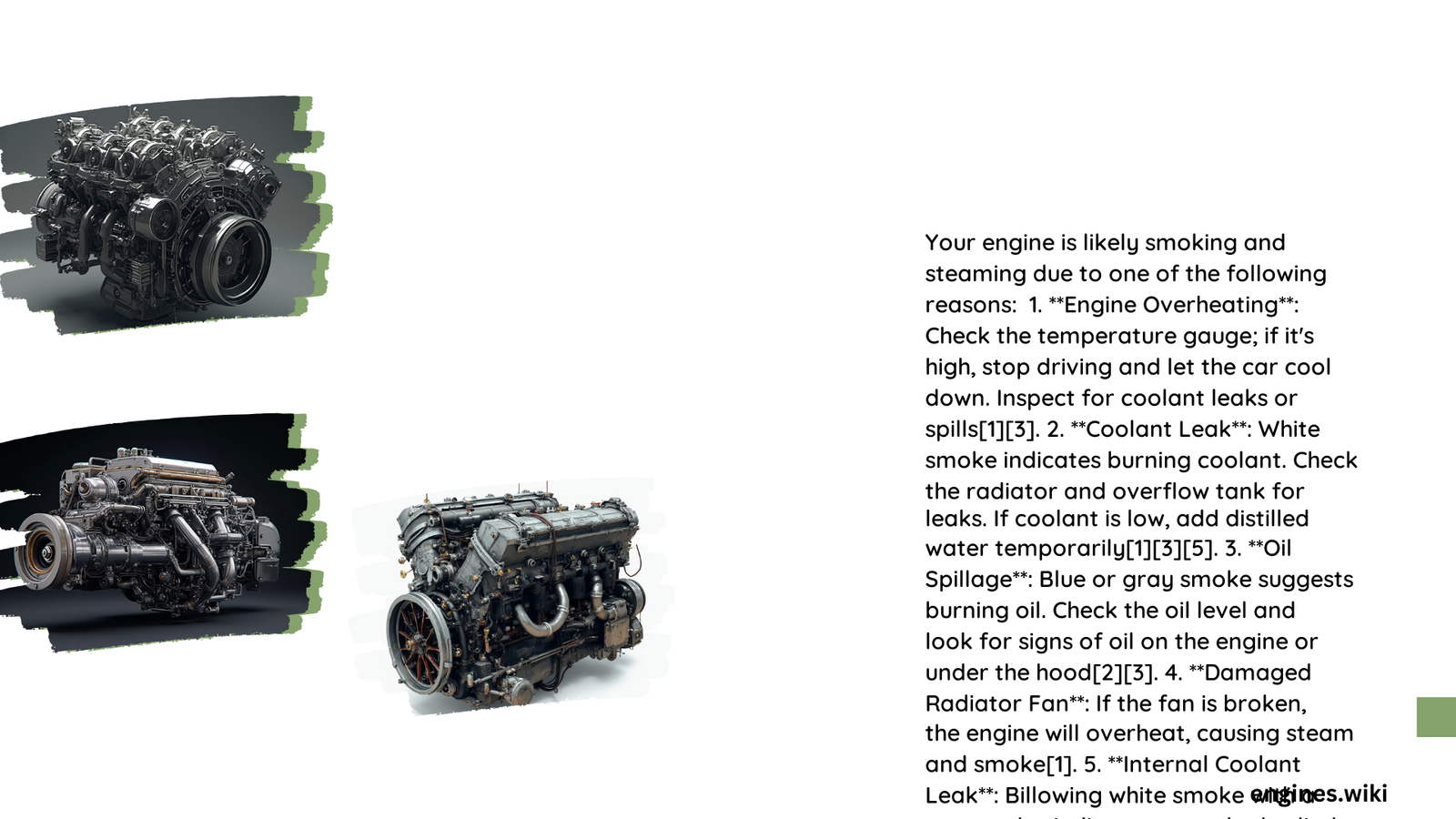When your vehicle’s engine starts smoking or steaming, it can be a concerning and potentially serious issue that requires immediate attention. Engine smoke can indicate various problems ranging from minor condensation to critical mechanical failures. Understanding the color, consistency, and context of the smoke is crucial in determining whether you’re facing a minor inconvenience or a significant mechanical problem that needs professional intervention.
What Causes Engine Smoke and Steam?
Why Does White Smoke Appear?
White smoke or steam from your engine can result from several scenarios:
- Coolant Leak Indicators
- Occurs predominantly when engine is cold
- Typically appears during initial engine start
-
Potential signs of damaged cooling system components
-
Head Gasket Failure Symptoms
- Persistent white smoke at various temperatures
- Potential mixing of coolant with combustion chamber
- Requires immediate professional assessment
| Smoke Type | Potential Cause | Urgency Level |
|---|---|---|
| Thin White Steam | Normal Condensation | Low |
| Thick White Smoke | Coolant Leak | Medium-High |
| Continuous White Smoke | Head Gasket Failure | Critical |
How to Diagnose Engine Smoke?
Visual Inspection Techniques
When encountering engine smoke, follow these systematic diagnostic steps:
- Temperature Monitoring
- Check engine temperature gauge
- Look for overheating indicators
-
Assess coolant reservoir levels
-
Physical Examination
- Inspect radiator hoses
- Check for visible fluid leaks
- Examine coolant system components
What Are Potential Risks?
Engine smoking can lead to significant mechanical complications if ignored:
- Potential Mechanical Damage
- Engine component wear
- Reduced lubrication
-
Increased friction
-
Performance Degradation
- Reduced fuel efficiency
- Decreased engine power
- Potential complete engine failure
When Should You Seek Professional Help?
Immediate Professional Consultation Recommended If:
– Smoke persists beyond initial engine warm-up
– Smoke changes color or density
– Accompanied by unusual engine sounds
– Temperature gauge indicates overheating
Expert Recommendations

Preventive Maintenance Strategies
- Regular cooling system inspections
- Timely fluid replacements
- Annual comprehensive engine diagnostics
- Address minor issues before they escalate
Critical Warning Signs
Red Flags Requiring Immediate Attention:
– Continuous thick white/blue smoke
– Significant coolant loss
– Unusual burning smells
– Engine performance irregularities
Final Insights
Understanding your engine’s behavior is crucial for maintaining vehicle health. While some smoke might be harmless, persistent or changing smoke patterns warrant professional evaluation. Always prioritize safety and consult certified automotive technicians when in doubt.
Technical Recommendations
- Use manufacturer-recommended coolant
- Maintain proper fluid levels
- Follow scheduled maintenance guidelines
- Monitor engine performance consistently
Reference:
1. SAE International Automotive Engineering Standards
2. ASE Automotive Diagnostic Guidelines
3. Society of Automotive Engineers Technical Publications
